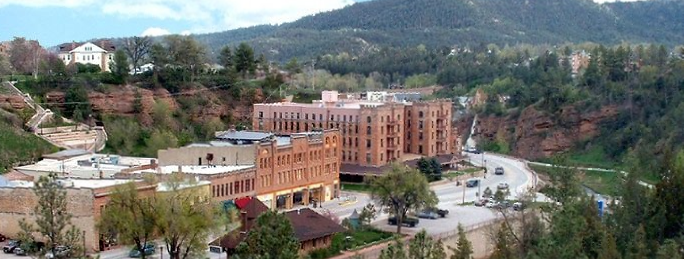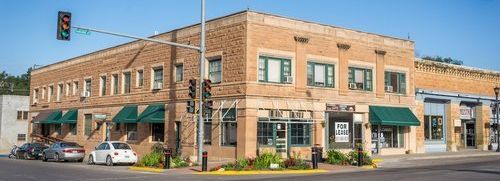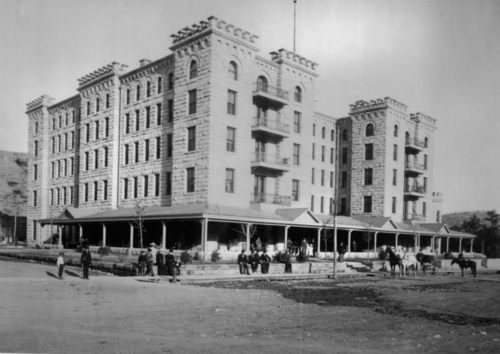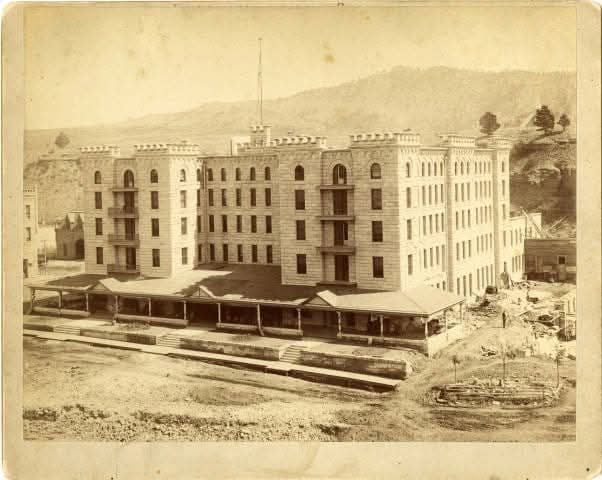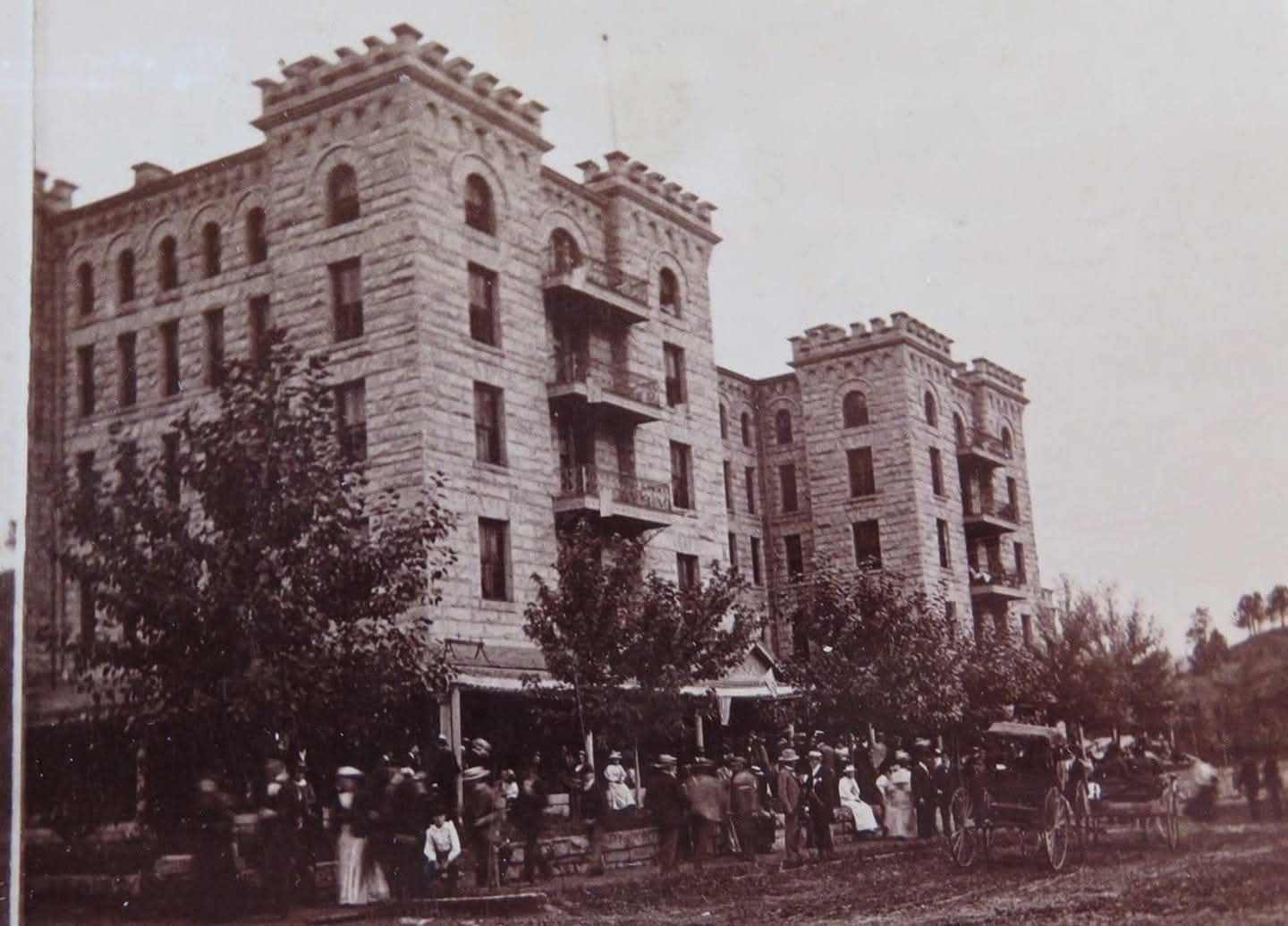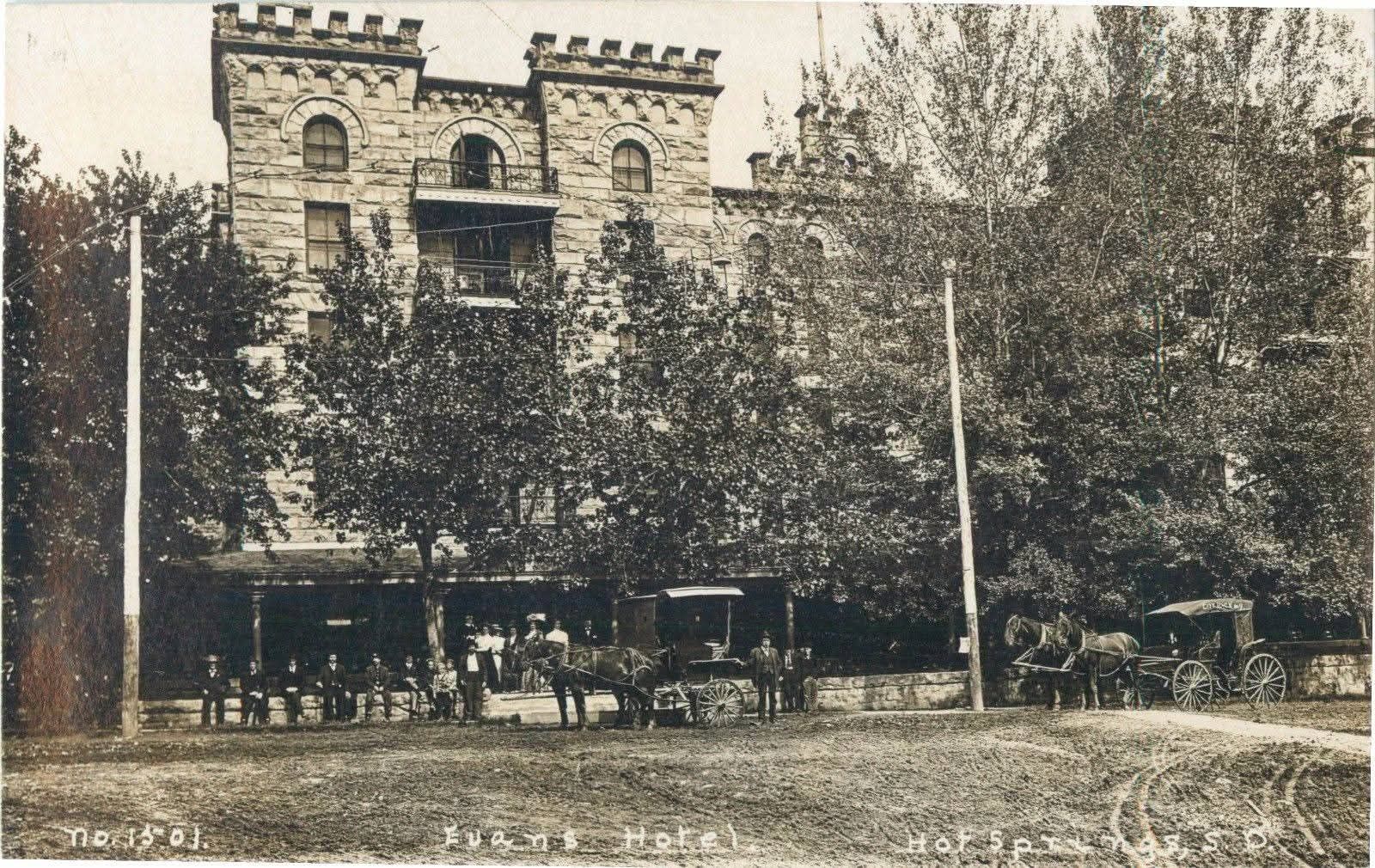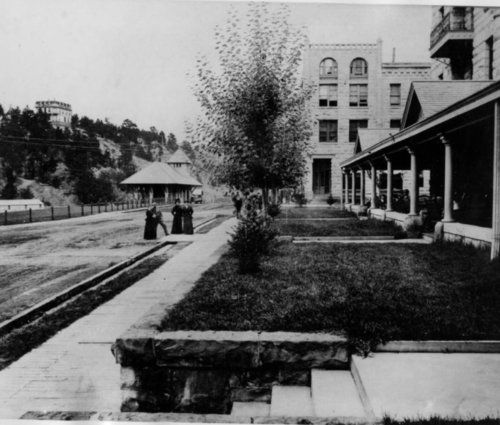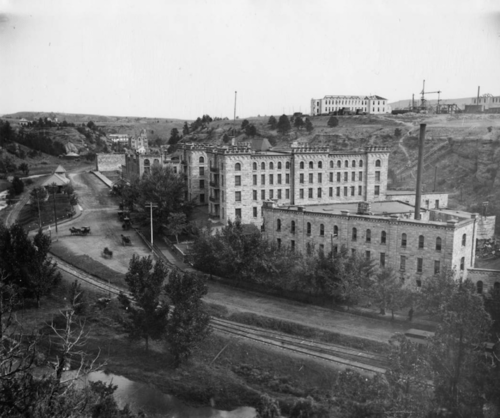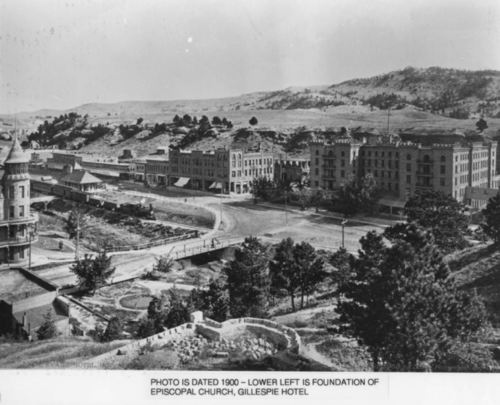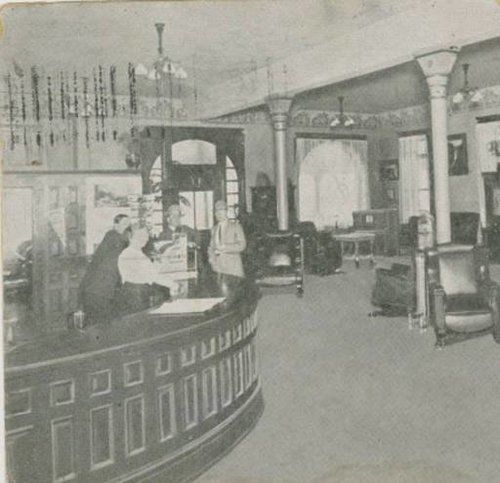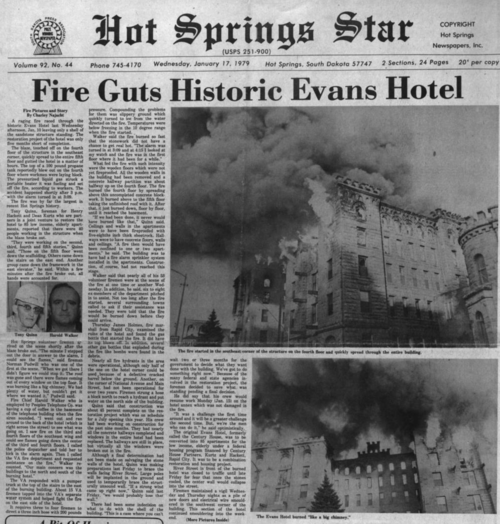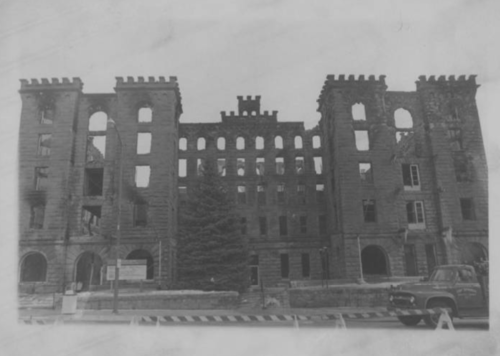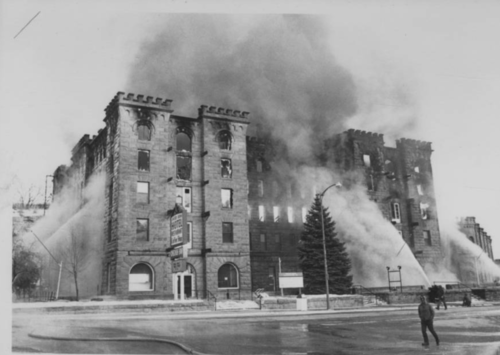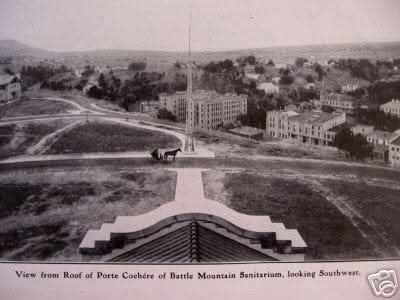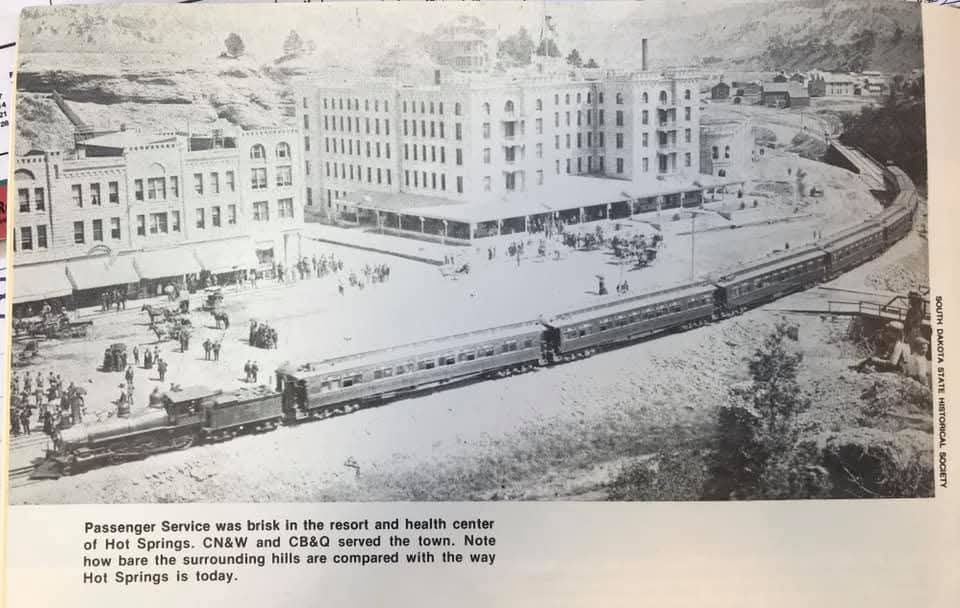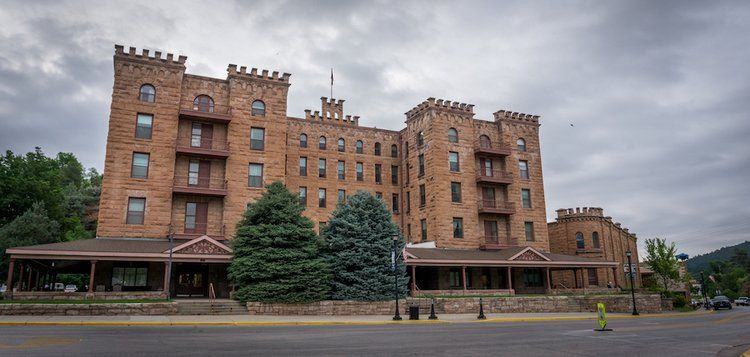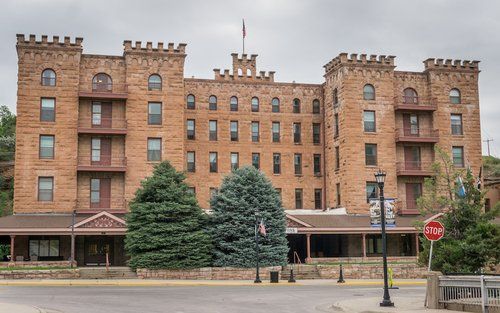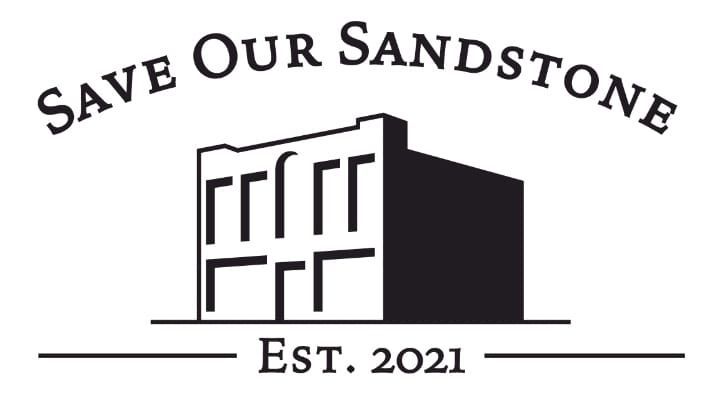The Evans Hotel
🏨 Evans Hotel
Address:
545 North River Street, Hot Springs, SD
Built:
1892
First Occupant:
Evans Hotel (Grand resort hotel and bathhouse complex)
Sandstone Quarry:
Evans Quarry
Architect:
Charles A. Smith
Contractor: Fred T. Evans
Architectural Style: Romanesque Revival resort hotel with crenellated towers; H-shaped main block; annex/bathhouse with V-shaped plan and Romanesque window treatment
📜
Historical Overview
After the wooden Minnekahta Hotel burned, Fred T. Evans began work on a new stone hotel on the same site. During construction in 1891 and early 1892, newspapers still referred to it as the Minnekahta Hotel. By midsummer, however, the name had shifted to the Evans Hotel in recognition of its patron, and the grand opening was announced for August 5, 1892.
From the moment it opened, the Evans stood as the most significant building in Hot Springs, embodying the city’s early aspirations as a premier resort destination. Built from locally quarried Evans Quarry sandstone, the massive H-shaped structure was designed by architect Charles A. Smith and constructed under the direction of Fred T. Evans.
The hotel’s crenellated towers and Romanesque fifth-floor windows drew comparisons to the King David Hotel in Jerusalem — though the Evans predates the King David by nearly four decades (Evans 1892; King David 1929–31). Shortly after completion, the annex was added to serve as the hotel’s bathhouse, also designed by Smith, featuring a V-shaped plan, Romanesque windows, and a matching crenellated roofline.
From the 1890s through the early 20th century, the Evans Hotel was a destination for health-seekers, travelers, and dignitaries. Guests arrived by train, enjoyed mineral baths on-site or across the river, and attended social gatherings, dances, and banquets, making the Evans the cultural heart of the city.
On January 9, 1979, a fire gutted the building just months before it was scheduled to reopen as elderly housing. The blaze destroyed the fifth floor, which was removed during repairs for safety reasons. Stone that could not be reused in the restoration was repurposed in the current Hot Springs Public Library.
The Evans Hotel remains a defining landmark in Hot Springs, its imposing sandstone walls still telling the story of the city’s golden age as a mineral-water resort.
🏛 Architectural Notes
- H-shaped main block in locally quarried Lakota sandstone from the Evans Quarry
- Romanesque Revival massing with crenellated corner towers and a central, decorative frontispiece
- Round-arched (Romanesque) window treatment on the original fifth floor; wrought-iron balcony details; a Victorian-era, neo-classical front porch; and a blind-arcade cornice
- Annex/bathhouse constructed shortly after the hotel with a V-shaped plan, crenellated roofline, and Romanesque windows
📍 Later Uses & Current Status
- 1890s–early 1900s: Premier resort and social venue for Hot Springs
- 1979: Major fire, fifth floor sandstone removed in subsequent repairs and replaced with brick.
- Post-1979: Salvaged, sound sandstone reused in the present Hot Springs Public Library.
🔍 Research Notes & Requests
Save Our Sandstone is still seeking:
- Additional early photographs of the Evans interior prior to the 1979 fire
- Archival documentation of notable guests and social events
QR Code Info: Built in 1892 by Fred T. Evans, the Evans Hotel was Hot Springs' premier resort and cultural center, featuring Romanesque Revival architecture with crenellated towers and a bathhouse annex. It attracted health-seekers and dignitaries until a 1979 fire destroyed the fifth floor. Today, its restored sandstone remains a symbol of the city’s golden era, with salvaged stone used in the Hot Springs Public Library.
